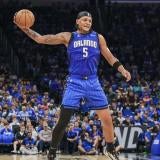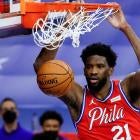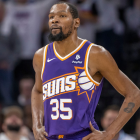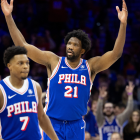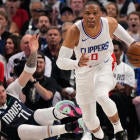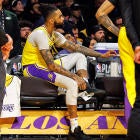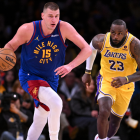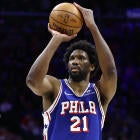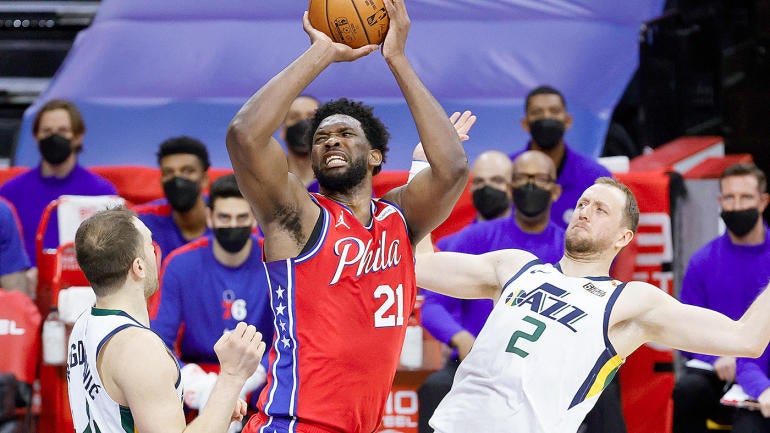
The NBA's two No. 1 seeds meet only twice per season by virtue of playing in opposing conferences, but boy, did the Utah Jazz and Philadelphia 76ers make their rare battle count on Wednesday. The Jazz led by as many as 13, but an MVP-caliber performance from Joel Embiid gave the 76ers a hard-fought 131-123 overtime victory that assured their place atop the Eastern Conference standings heading into the All-Star break.
The Jazz and 76ers met once before earlier in the season, but with Embiid out, there wasn't much of value to be learned out of that Utah victory. Embiid was back in this one, though, and that taught us quite a bit about how a possible Finals matchup between these teams would play out. Here are the most important takeaways from Philadelphia's win.
Target acquired
Crunch time, and by extension, basically all of overtime, is about matchups. A team's ability to get the right scorer the ball in the right spot against the right defender is usually going to determine whether it wins or loses. Well, let's check in on Philadelphia's overtime offense. Here's Tobias Harris' first bucket of overtime...
And his second...
And sure, why not his third?
You can barely tell that these are different possessions. On all three, Harris gets the ball on the left block. On all three, Harris starts in the middle of the floor and runs through traffic, trying to ensure a matchup against Bojan Bogdanovic. On the first two, he succeeds and scores. On the third, he draws a slightly less favorable matchup against Royce O'Neale, but given the four-inch height gap, is still in an advantageous position and manages to score again.
There has been plenty of consternation over the years regarding Philly's late-game offense. Having a shooter as weak as Ben Simmons creates undeniable limitations. But the 76ers have quietly climbed to seventh in clutch offense by scoring over 116 points per 100 possessions this season. They've done so in large part behind their ability to hunt the right matchups. Harris is not a traditional late-game scorer. Despite his MVP candidacy, Embiid isn't either. Philadelphia's roster has been constructed in such a way that they are largely responsible for generating late-game offense, and as a result, the pair has taken 58 percent of all clutch-time shots for the 76ers. Yet thanks to their carefully choreographed matchup-hunting, the two of them have combined to shoot 53.6 percent in clutch situations. Not too shabby. Things will get harder in the playoffs when opponents get more aggressive when it comes to sagging off of Simmons, but for now, the 76ers are doing a good job of generating the right kinds of looks when it counts.
As for the Jazz? They currently have the 28th-ranked clutch defense in the NBA largely because they're susceptible to these maneuvers. So much of their defensive success relies on Gobert's mere presence and the schematic advantages it produces. Opponents struggle to play 48 minutes against a defense that never has to leave shooters thanks to the rim-protection it gets out of a single defender. But ask those same opponents to play two or three minutes of isolation ball with their stars hunting for Bogdanovic or Joe Ingles? That's more manageable, and it's something the Jazz have to reckon with ahead of the playoffs.
More struggles for Rudy Gobert against elite competition
Rudy Gobert is a two-time Defensive Player of the Year, and he's on track to win the award again this season with Utah back up to No. 3 in defense. Within the context of a team defense, he is elite. Utah's entire scheme is built around staying at home on shooters and funneling drivers into him knowing that he can deter almost anything at the basket. It has given the Jazz one of the rarest shot profiles in basketball: they barely allow any layups or 3-pointers.
But a disturbing trend is emerging whenever Gobert plays against elite offensive big men. Nikola Jokic is averaging 41 points per game against him in two matchups this season. Embiid just hung 40 on him. Anthony Davis averaged just a tick below 30 points per game on Gobert across three matchups last season with 52%/40%/87% shooting percentages. The Jazz are 1-5 in those games.
The simple explanation here would be that these are the rare star big men that can score at an elite level both inside and out. Yes, Gobert is more comfortable away from the basket, but, well, Embiid and Jokic have still managed to punk him in the post.
There are multiple issues at play here. Gobert is a good post-defender, but hardly an elite one given his skinnier frame. He hasn't finished in the 80th percentile in points per possession allowed in the post since the 2016-17 season. The fact that Gobert has to account for the perimeter with these superstars compromises him further, especially in pick-and-roll, but more importantly, it takes Utah out of its preferred defensive alignment.
The best version of Gobert is the one dedicated entirely to rim-protection. Forcing him to defend players like Embiid, Jokic and Davis makes that significantly more difficult because they need to be accounted for at all times. That, in turn, makes it easier for the players Gobert isn't defending to get to the rim. The 76ers scored 131 points on only eight 3's Wednesday. They did that by scoring 64 points in the paint. That's nearly impossible to do against Gobert when he can protect the rim exclusively, but when he's occupied by an MVP candidate? Suddenly things get a lot easier for everybody else, and that's a problem Utah is going to have to solve in the playoffs with possible matchups against Davis, Jokic and Embiid looming.
Doc's bench brigade comes to the rescue
Doc Rivers has made a concerted effort to align Embiid's minutes with Simmons' so far this season. It's counterintuitive in the short-term. As a general rule, each additional star added to a lineup offers diminishing returns, and that is especially true when it comes to those that clash stylistically as much as Simmons and Embiid do. But the 76ers understand that their fate is tied to both of them. Winning in the playoffs means winning the minutes that they share, so Rivers is using the regular season to figure out how best to utilize the two of them together rather than maximizing their win total by separating them.
That potential long-term benefits are enormous, but it has led to some of the ugliest bench minutes in all of basketball. The Sixers lose the minutes Simmons and Embiid both sit out by an average of 5.8 points per 100 possessions. The first half was much of the same. Philadelphia trailed by three when Embiid left the game with 1:47 remaining in the first quarter. They were down 13 when the pair returned midway through the second quarter.
Simmons leaving the game down six in the third quarter should have been the death blow. It wasn't. The five-man bench brigade of Shake Milton, Furkan Korkmaz, Matisse Thybulle, Mike Scott and Dwight Howard inexplicably gave the 76ers the lead. The starters held on to get the game to overtime, where they won, but Rivers' use of those reserves raises more interesting questions as the season progresses.
Does he plan to stagger Simmons and Embiid in the playoffs? Would he sit both and play Harris? Will the 76ers add another shot-creator ahead of the trade deadline? The numbers suggest that, as beneficial as keeping the two superstars together might be in the long-run, they'd be best served by staggering in the postseason for the sake of maximizing each. This victory offers conflicting data points. It's a tactical process that's worth monitoring moving forward.











